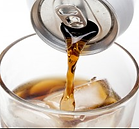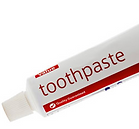


A L’Oreal plant in Little Rock, Arkansas suffered from deteriorated performance rates in 2007. Many of the employees had been in the same positions for 15 to 20 years and the knowledge base would retire in two to five years. After Richard Jones, Vice President of the North Little Rock manufacturing for L’Oreal, joining the plant, he redesigned the plant, and increased productivity through lean manufacturing, SMED, TPM, Kaizen and 5S. The Little Rock plant changed its physical organization to create a cell, a unit consists of three to four production lines, and implemented lean manufacturing principles, together with a downtime monitoring system to track the productivity. Each cell has a manager, sets its own budget, and is responsible for its own KPI. Also, each cell makes high-level decisions from teams on production lines to various shift patterns depending upon business needs, giving the employees flexibility. The plant has improved productivity 6.2% from 2008 to 2009.
In Europe, Unilever is one of the biggest propagandists of TPM. However, in the 1990s, Unilever’s TMP implementation in the Europe did not appear to run as smoothly as it did in Japan. Unilever invited specialists from JPIM (Japanese Institute of Plant Maintenance) to support the implementation of TPM in Europe. The first is to improve the technical performance of the production process, resulting in a higher OEE. Second, Unilever invested in the individual employee’s knowledge, skills and attitude. Seiichi Nakajima, the guru of TPM, illustrated the point: “TPM is the making of products through the making of people”. Finally, Unilever focused improving the quality of the organization. These actions lead to dozens of Unilever factories winning TPM Awards between 1996 and 2006. Two factories in Europe have even reached the World Class level: the Lipton Tea factory in Brussels and the ice cream factory in Naples.
Chris Bacon, production manager of Pepsi Bottling Ventures in Raleigh, faced the challenges of improve performance, increase line availability and attain better final quality results. Bacon applied OEE (Overall Equipment Effectiveness) improvement and combined with Lean Six Sigma principles: OEE provides an aggregate index of availability, performance rates and quality to provide uptime and productivity comparisons, Six Sigma uses statistical tools to eliminate the causes of defects and variability, and Lean Manufacturing provides tools and processes to root-out waste in all forms. As a result, Pepsi Bottling Ventures boosts uptime, adds more than an hour to daily productivity and covers automation costs in one year after.
Lean Manufacturing



Combining LSS and OEE
Total Productive Maintenence (TPM)
Key Companies Leveraging LSS